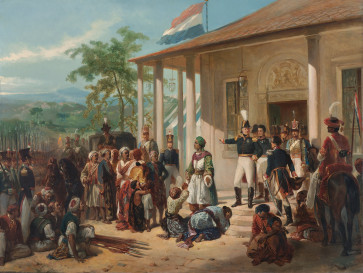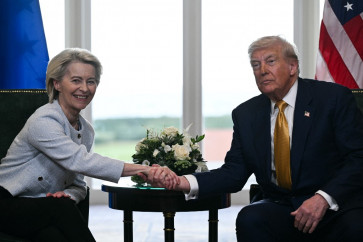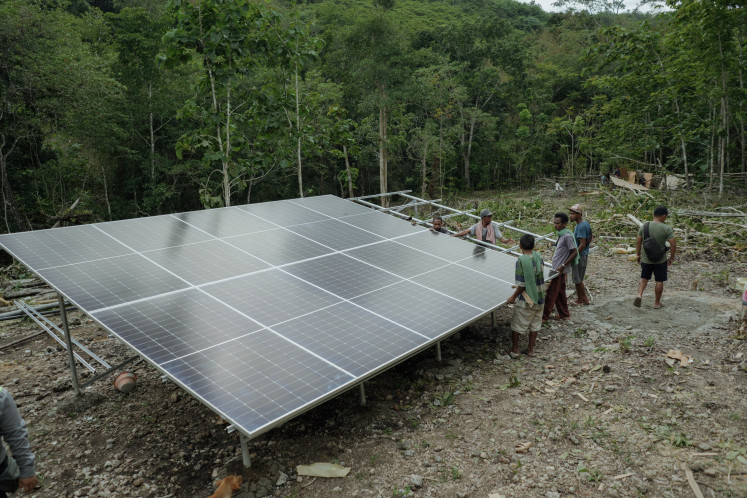Popular Reads
Top Results
Can't find what you're looking for?
View all search resultsPopular Reads
Top Results
Can't find what you're looking for?
View all search resultsHakka Museum dreams of changing perspectives in RI
The Hakka Museum in Taman Mini Indonesia Indah (TMII) in East Jakarta aims to give a new perspective on the community in Indonesia
Change text size
Gift Premium Articles
to Anyone
T
he Hakka Museum in Taman Mini Indonesia Indah (TMII) in East Jakarta aims to give a new perspective on the community in Indonesia.
Hakka is a Chinese subethnicity from China's southern seaboard, particularly Guangdong and Fujian provinces. Although a number of Hakka people migrated to Kalimantan in the 1200s, the biggest migration of Hakka people to Southeast Asia did not occur until the 1800s, when many of them fell into poverty due to various upheavals in China.
Ethnic Chinese coexisted peacefully in Indonesia with other ethnic groups until 1965, when many were targeted after the Sept. 30, 1965 attempted coup. The Chinese language, names and cultural expressions were banned after that. Ethnic Chinese were again targeted during the May 1998 riots before the reform movement. In 1999, the ban against Chinese cultural expressions was lifted.
Hakka Museum office head Chow Susin ' better known by his Indonesian name Surikin ' said the museum aimed to offer a different perspective on Chinese-Indonesians.
'Many view ethnic Chinese negatively in Indonesia, including the Hakka people. In this museum, we hope that we can eliminate the bad sentiment and teach something new to visitors,' Surikin told The Jakarta Post at the museum recently.
The museum is housed in a three-story building shaped like a traditional tulou (rural Hakka dwelling made of stone, bamboo and wood that is round).
The museum displays various artifacts and vintage pictures of the Hakka migration and activities in Indonesia during the 1800s and 1900s, accompanied by comprehensive explanations. Many pictures of prominent Hakka figures in Indonesia and around the world are on show at the museum.
The museum, Surikin said, was initiated by the Prosperous Indonesian Hakka Community. Many of the pictures and artifacts were donated by members of the community.
Surikin is a member of the community. Businessman Iwan Mahatirta is chairman of the museum.
'Many do not know that the Hakka people suffered a lot before finally picking themselves back up. Especially in Indonesia, we want to show that the Hakka contributed a lot to the development of the country. We are not money-hungry merchants,' Surikin said.
In Indonesia, many ethnic Chinese are successful entrepreneurs. Prominent Hakka entrepreneurs in Indonesia include Agung Podomoro Group founder Anton Haliman, Summarecon Group founder Sutjipto Nagaria, Alfamart founder Djoko Susanto and the founder of Santini Group (formerly Gemala Gorup) Sofjan Wanandi.
'Many Hakka businesspeople have contributed to the economy. Several are excellent politicians. During the struggle for independence, a number of Hakka figures were also involved,' he went on.
Hakka politicians include Hasan Karman, mayor of West Kalimantan's Singkawang; Christiandy Sanjaya, West Kalimantan deputy governor from 2008 to 2013; and Basuki 'Ahok' Tjahaja Purnama, the newly inaugurated Jakarta governor.
'Pak Ahok is of Hakka descent and has proven to be an excellent leader. He has contributed greatly to the development of Jakarta,' Surikin said.
Meanwhile, Ahok has said that he respects the efforts of Hakka people in teaching their history and culture.
'I've visited the museum twice. I respect the effort. [The museum] is quite good,' he told the Post
recently.
Several visitors scoured the museum on Sunday, including 28-year-old Siti Suci Astarini. 'I learned a lot from this museum, not only about the Hakka people but also bits of Indonesian history. I did not learn this at school,' she said.










